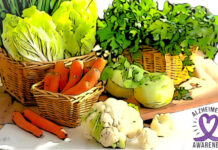‘Mountain Product‘. A label and a special quality scheme, now also an ad hoc label, to enhance foods whose supply chains are rooted in mountainous areas.
‘Mountain product
‘, a special quality scheme
A green logo
, two stylized mountains, reserved for foods made in the mountains from raw materials that come from mountainous areas.
As early as
1998
the optional wording ‘
produced in the Italian mountains’
, but it was reserved only for PDO and PGI products. (1)
DM 26.7.17 extended to the generality of foods–wines excluded–the possibility of mentioning the mountain origin on the label, if the established conditions are met. (2)
The basic idea is to enhance products that come from economically disadvantaged areas. Where the altitude and/or steepness of slopes drastically limit the chances of using the land, increasing the cost of working it. (3)
‘Mountain product
‘, the rules to follow
The optional quality claim
‘
mountain product
‘ is subject to the conditions precisely defined in DM 26.7.17. For the specific purpose of preventing deceptions such as the ‘
Alpine milk’
lowland
.
Mountain areas must therefore be located only in municipalities classified as (totally or partially) mountainous and are indicated at the regional level. (4)
The definition of mountain product Instead, it derives from European legislation. And it is precisely the reg. EU 1151/2012 – the same one that protects PDOs and PGIs – to prescribe the following:
– raw materials and feedstuffs must come ‘essentially‘ from mountainous areas,
–
the transformation
, including curing and ripening activities, must in turn take place in the aforementioned areas. (5)
The animals
must be raised
on site
. For at least 2/3 of the lifetime in the case of processed products. Transhumant animals, on the other hand, need only spend a quarter of their existence in the mountains.
Feeds
from other sources are allowed on the farm within an average quota of 50 percent, which is reduced to 40 percent for ruminants and extended to 75 percent for pigs.
Herbs, spices and sugar
used in food productions may themselves come from different areas, as long as they do not exceed 50 percent of the weight of the ingredients entered in the recipe.
Exemptions cover certain individual operations (e.g., slaughtering, oil pressing), as long as the facilities are located within 30 km of the administrative boundary of the mountain area. Within 10 km, for milk and dairy products.
Dario Dongo and Giulia Torre
Notes
(1) Mi.P.A. Decree 27.5.98
(2) See MiPAAFT website, FAQ 18.4.18.
(3) See reg. EC 1257/99, Art. 18.1
(4) See reg. EU 1305/13, Art. 32.1
(5) See also reg. EU 665/14, supplementing reg. EU 1151/12








